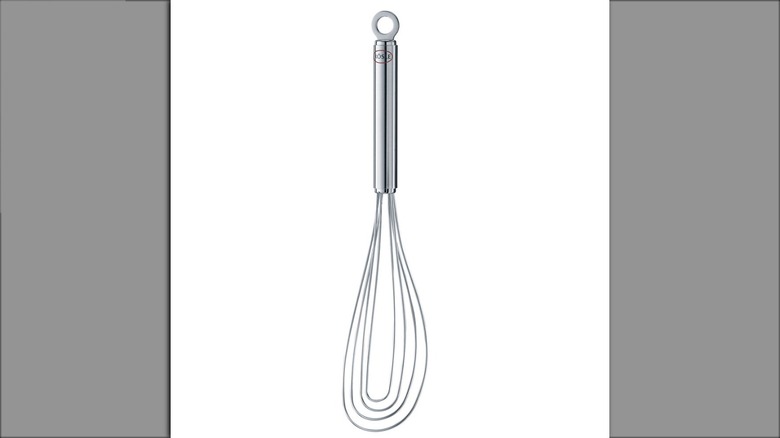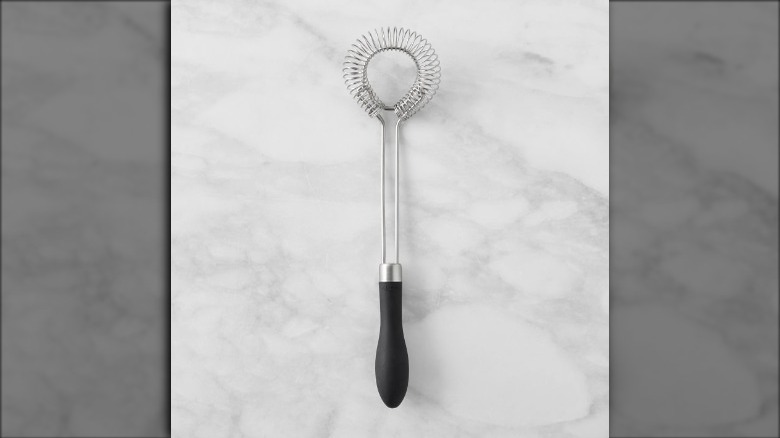What Is A Flat Whisk And Why Should You Use It?
If you only own a balloon whisk, which is a long whisk with structured, spaced wires formed into a balloon-shape, then chances are you are really missing out on some great kitchen hacks (via Taste of Home). There are actually a surprising number of whisk types, but some are far more useful than others. Though balloon whisks often act as a do-it-all whisk, flat whisks are another great tool that can do almost as much as balloon whisks.
There are even two styles of flat whisks. The first looks like a long, thin French whisk (which is less bulbous than a balloon whisk) that has been flattened, per Taste of Home. This style of whisk also resembles a slotted spatula, but with very large slots due to the thin wires. The second style of flat whisk is one that looks like "a coil bent into a circle and attached to a handle at a slight angle," (via Bon Appétit). Despite the different appearances, both styles of flat whisks can be used for the same or similar tasks.
Why you should have a flat whisk and how to use it
While flat whisks are sometimes referred to as sauce whisks, that's only one thing that it can be very useful to make (via Bon Appétit). Flat whisks are known to be so great for making sauces — gravies and other similar foods like custard or curd — because the shape of the flat whisk allows it to keep ingredients like flour or sugar from sticking to the pan and burning. Another notable and often-hailed feature of the flat whisk is that it can easily scrape the corners or edges of most pans, so nothing sticks or burns there either.
Though this whisk is highly lauded for its reachability, it can do a lot more than make sauces. This whisk is also great to use when making eggs in a couple of different ways. You can easily scramble eggs right in the pan instead of whisking them before they're poured into the pan. Bon Appétit suggests using it to make polenta or grits, which tend to stick to the pot. While Taste of Home recommends using the whisk to fish poached eggs out of the water, as well as to keep oatmeal from sticking to the pot. The more you use this incredibly helpful tool, the more you'll likely find a use for it.

